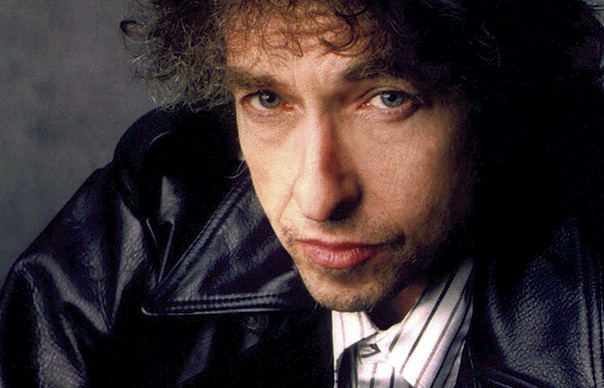“Have I ever played any song twice exactly the same?”
“No, Bob, no.”
“See? I don’t do that.”
In this week’s very special archive feature (from November 2008, Take 138), Uncut talks to the musicians, producers and crew who have worked with him from 1989 to 2006, where an unprecedented glimpse of the real Dylan emerges – a genius who works at night, makes producers smash guitars in frustration, obsesses over Al Jolson, and never, ever repeats himself.
Then, Allan Jones reviews the lost songs and radical revisions of 2008’s Tell Tale Signs, the astonishing 3CD collection of unreleased Dylan material taken from the past 20 years – a vital part of the Dylan canon…
_________________________
OH MERCY
(1989)
By the end of the ’80s, as he writes in Chronicles, Dylan wasn’t even sure whether he even wanted to make another record. In that frame of mind, he hooked up with producer Daniel Lanois in New Orleans for what became his most focused work in 10 years…
Malcolm Burn, engineer: “In the weeks before recording, I kept asking Dan [Lanois], ‘Have you heard from Bob? Have you heard any songs?’ Then, a week before we were due to start, we received a cassette from Bob. I thought, ‘Great, we’re going hear some songs.’ There was this little note: ‘This’ll give you a good idea.’ Dan and Mark Howard and I sat down to listen – and this Al Jolson music started. We were like, ‘What the fuck?’ So, we fast-forwarded. It was a whole tape of Al Jolson. We looked back at Bob’s note: ‘Listen to this. You can learn a lot.’ When Bob arrived, though, I’d sort of forgotten this. Then, one evening, something came up about favourite singers, who were influences, especially when it comes to phrasing. Bob said several times that phrasing was everything. And he said, ‘My two favourite singers are Frank Sinatra and Al Jolson.’ And I thought, wow, now I get it. I asked who his favourite songwriters were. ‘Gordon Lightfoot and Kris Kristofferson. Those are the guys.’”
Mark Howard, engineer: “When we started, because Dylan and Lanois didn’t have a working relationship, there was about two weeks of finding the ground. It was slightly uncomfortable. Dylan was being a bit snotty, and Dan has this ability to be over-excited. That’s how Dan likes to work at times: he hypes people on their performances, and that makes them excited, too. Well, that didn’t work with Dylan. Bob was just strumming, sloppily playing, and Dan was politely putting up with it. Dan would try to get things out him. He’d say, ‘We did this mix this afternoon…’ Dylan would cut in, ‘I don’t even wanna hear it. I only wanna hear stuff done at night.’ He had this night rule.”
Daniel Lanois, producer: “Bob had a rule, we only recorded at night. I think he’s right about that: the body is ready to accommodate a certain tempo at nighttime. I think it’s something to do with the pushing and pulling of the moon. At nighttime we’re ready to be more mysterious and dark. Oh Mercy’s about that.”
Howard: “Those first weeks, everything we did, he wouldn’t accept it. But there came this one point when Dan finally had a freakout. He just wanted Dylan to smarten up. It became… Not a yelling match, but uncomfortable. Malcolm and me, we left and let them sort it out. From then on, Dylan was just really pleasant to work with.”
Lanois: “I operate with Bob the same way I always operate. I’m totally committed and I try and look out for the best expression, the best performance. I’m completely honest and clear about what I think is the best. And if anything gets in the way of that, then they’re gonna have to deal with The Lanois.”
Burn: “Bob would show up every night about nine, and we’d work into the early hours. He’d come in with a rolled-up bundle of paper, lyrics he was working on. He’d go over to where we had the coffee machine, start scribbling, fixing up lines, and then he’d say, ‘Okay, let’s go.’”
Mason Ruffner, guitarist: “Bob was doodling a lot with the lyrics. He used a pencil. He didn’t use no ink-pen. Always making changes and additions and subtractions. An elephant could’ve walked in and he wouldn’t have seen it. His concentration is unbelievable.”
Howard: “He would always be working on his lyrics. He’d have a piece of paper with thousands of words on it, all different ways, you couldn’t even read it. Words going upside-down, sideways, all over this page. I never saw him eat. He drank coffee and smoked cigarettes, and he’d sit chipping away at the words, pulling in words from other songs.”
Burn: “For him, the song wasn’t ready to be a song until the lyrics were in place. It wasn’t necessarily about the melody or the chords. The only thing that made any difference to Bob was whether what he was saying was in place. Quite often, he’d rewrite even one line. Even by the time we were mixing, he’d suddenly say, ‘Y’know, I’ve just rewritten that line, can I re-sing it?’ One night, we were going to do “Most Of The Time”, and he sat down with his guitar, and he said, ‘We could do it like this…’, and I recorded him on acoustic guitar and harmonica, the archetypal Bob Dylan thing. He actually referred to himself in the third person: ‘That would be a typical Bob Dylan way of doin’ it.’ Then he did it another way, like a blues, really slow. The treatment of the song was secondary. If the lyrics were in place, then it was sort of, ‘Well, what’s appropriate? What kind of song do we need to stick in here? If it needs to be up-tempo, I’ll do it up-tempo.’”
Howard: “I’m not sure if he had an actual sound in his head to begin with. He’d recorded this whole record before. With Ron Wood. There’s a whole version of Oh Mercy with Ron Wood.”
Ruffner: “It was different. We were recording in an old house, just sitting around the living room. Bob had his little stand with his lyrics, and we’d cut off into something. Seems we were cutting these songs all kinds of ways. Rock groove, slow, funk or folk groove, trying different grooves and tempos. Bob would put his head down and start playing, and we’d tag along. It was all a big experiment, try the song 20 different ways. We were doodling with half the songs that wound up on his next record, Under The Red Sky.”
Burn: “One song that didn’t end up on Oh Mercy that Dan and I pushed for was ‘Series Of Dreams’. I remember standing in the courtyard, Bob saying, ‘Y’know what: I only put 10 songs on my records.’ I said, ‘But, Bob, that song is so great.’ He goes, ‘Nah, nah. I’m only puttin’ 10 songs on there.’”
Howard: “We were doing the record in this Victorian mansion in the garden district of New Orleans. I had a bunch of Harleys in the courtyard, and Dylan asked, ‘Think ya could get me one of those?’ I got him this 1966 first year Shovelhead Harley Davidson. Dylan would go out for a ride every day. But one day, I heard him stall just around the corner. So I ran around the corner to see, and he’s sitting there, on the bike, staring straight ahead. And there are already three people gathered around the front of the motorcycle, saying, ‘Bob, can we have your autograph?’ And he just sat there like they weren’t even there. I ran up and said, ‘Hey, c’mon guys, leave the guy alone.’ And he just continued to sit there and stare straight ahead. So we got the bike fired up and – bang – he took off. He was living in California in those days and there was no helmet law in California, but there we were in New Orleans. He’d come back from rides and he’d say, ‘The police are really friendly around here, they’re all waving at me.’ I’m like, ‘They’re waving at you because you don’t have a helmet on, and they’re telling you to stop!’ I think the bike helped him. He’d go for a ride, think about what was going on, and I think he could see where Dan was trying to go.”
Lanois: “The concept was fully emphasising the centre of the picture: the song, Bob’s voice, and Bob’s guitar or piano playing. Then we built the frame around the centre, with what we had available to us in the neighbourhood musically.”
Burn: “Bob never really spoke to the other musicians. He’d speak to people he knew, but he wasn’t interested in making buddies. And he always wore this hoodie, y’know. The first few days, we had the Neville Brothers’ rhythm section there, and the drummer, Willie Green, came up to me after the second night. I was sitting at the mixing board, and Bob was like, four feet away. Willie says, ‘Man, I’ve been here two or three days. When the fuck’s Bob Dylan showing up?’ I said, ‘Willie, he’s sitting right next to you.’ ‘Oh. Is that Bob Dylan right there?’ And then, seriously, the bass player, Tony [Hall], he comes in, and he says, ‘Man, that Bob Dylan is some weird motherfucker.’ Bob just sort of looked up and raised his eyebrow. Then went back to working on his lyrics.”
Ruffner: “For me, Bob was easy to work for. But I think he was a pain in the ass for some people. Sometimes he’d argue with Lanois, looked like just for the sake of arguing. After reading Chronicles, though, it seems that was a crucial time. It was shit or get off the pot. I think he was a little apprehensive, didn’t really know who Daniel was and if he could make him a record. But, after he realised they were going to make a good record there, I think Dylan softened up. By the end, he was a lot different. I remember he did a drawing of Daniel.”
Howard: “I always like to have a drawing pad with me. One day, Bob saw it, and he said, ‘Hey, mind if I use your pad? Daniel, you mind if I draw a picture of you?’ So Bob scratches out this drawing of Dan, like this wild Indian, hair all over. It was pretty cool. But he didn’t want to sign it, and he didn’t sign it. So, this picture was left in my art book. About two weeks after we’d finished the record, I’m sitting in one day, and suddenly there’s somebody at the door. I go out, and it’s New Orleans, pouring with rain – and there’s Bob in his hoodie. I say, ‘Hey, Bob.’ He says, ‘I’ve decided to sign the drawing.’ And he came in, he signed the drawing, and he left.
“A lot of people get the impression he has a star complex, but he really doesn’t. He’s just saving his energy for what he’s doing…”



